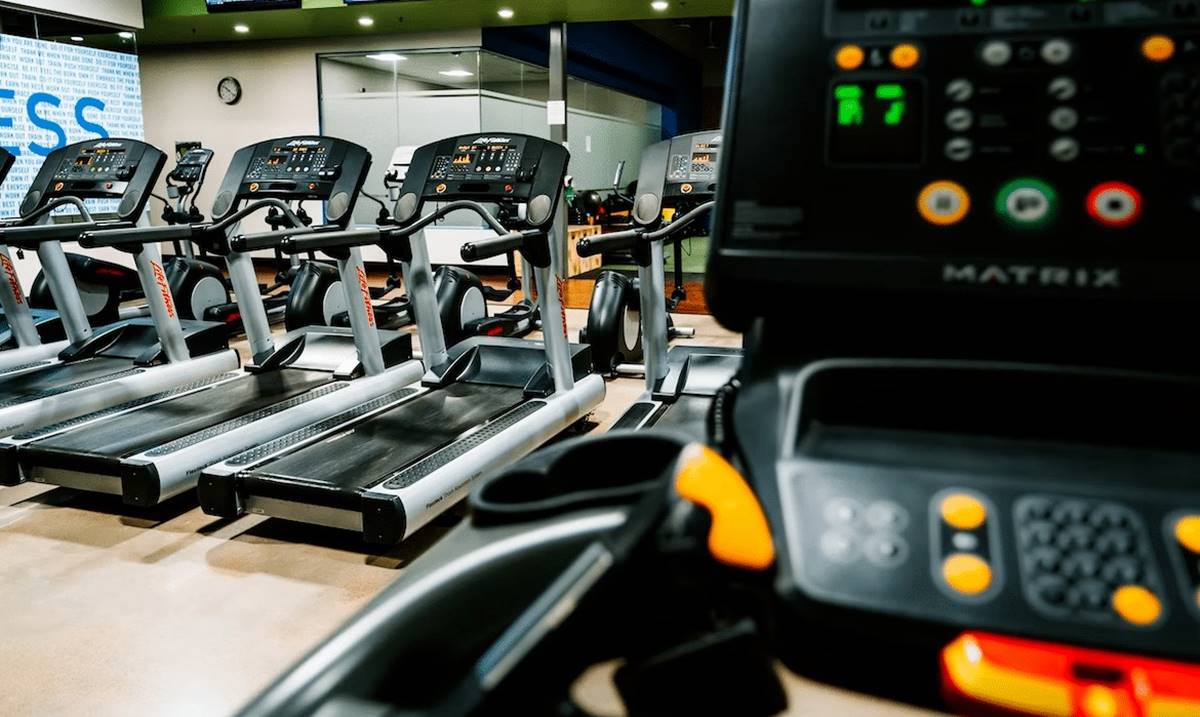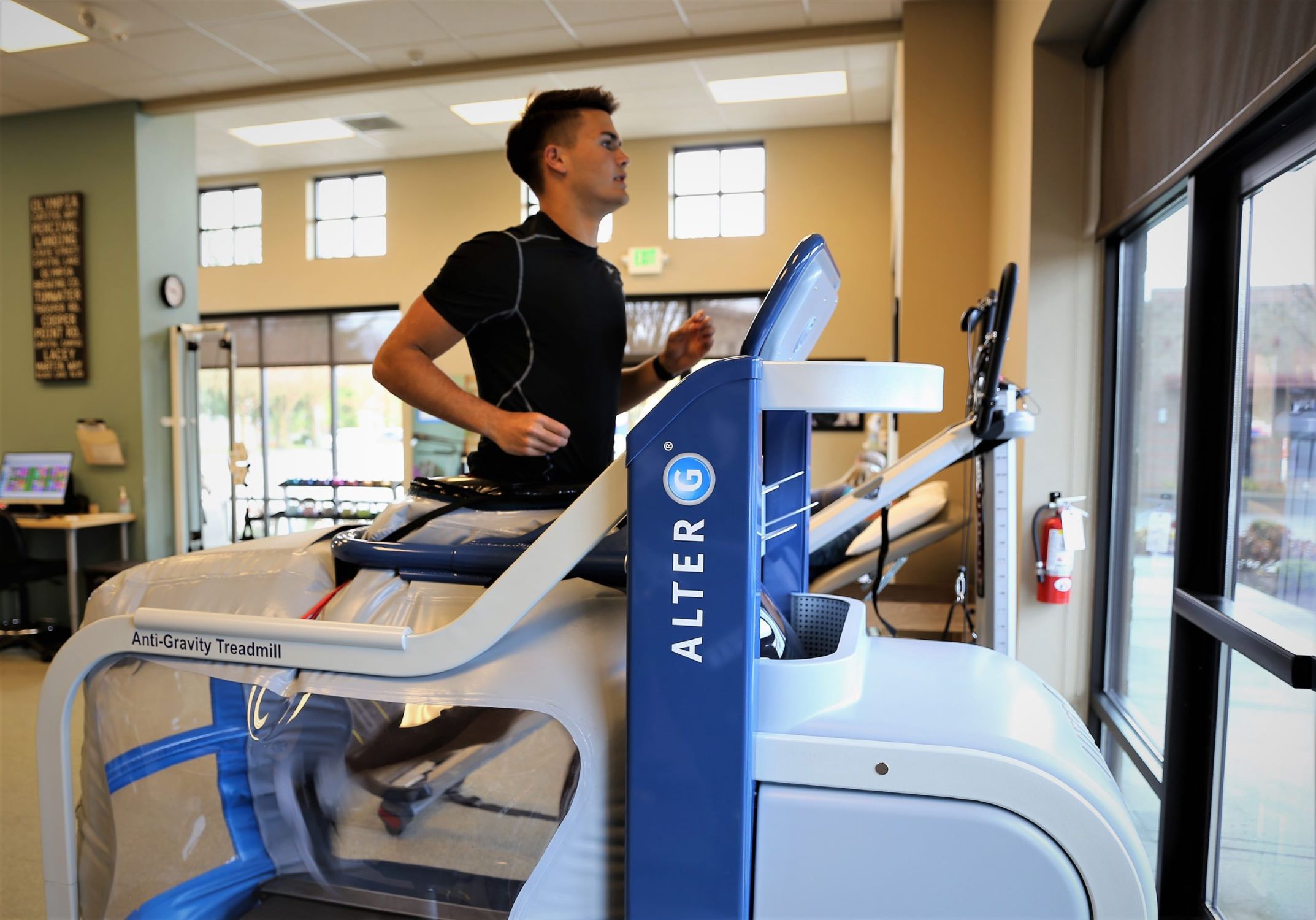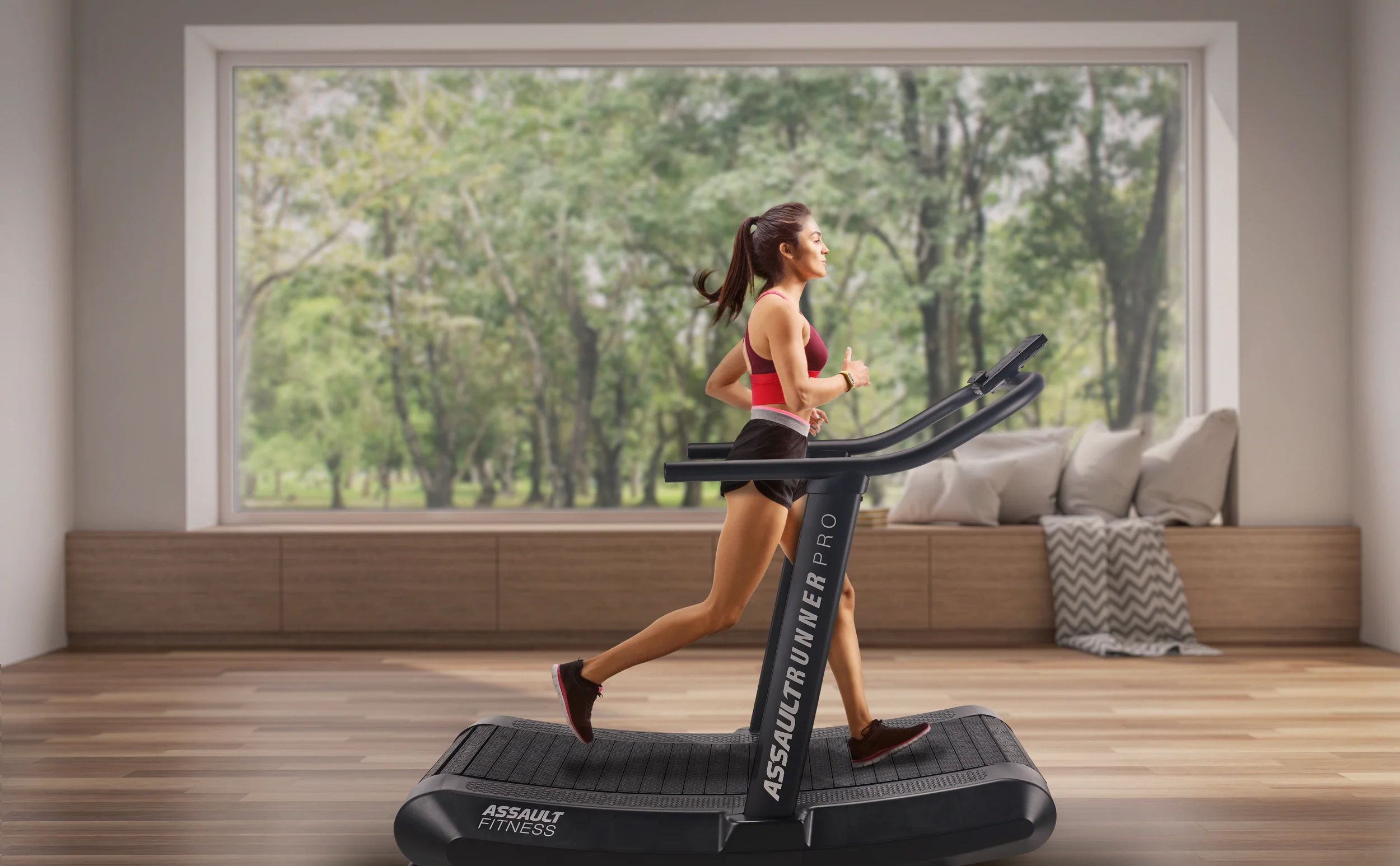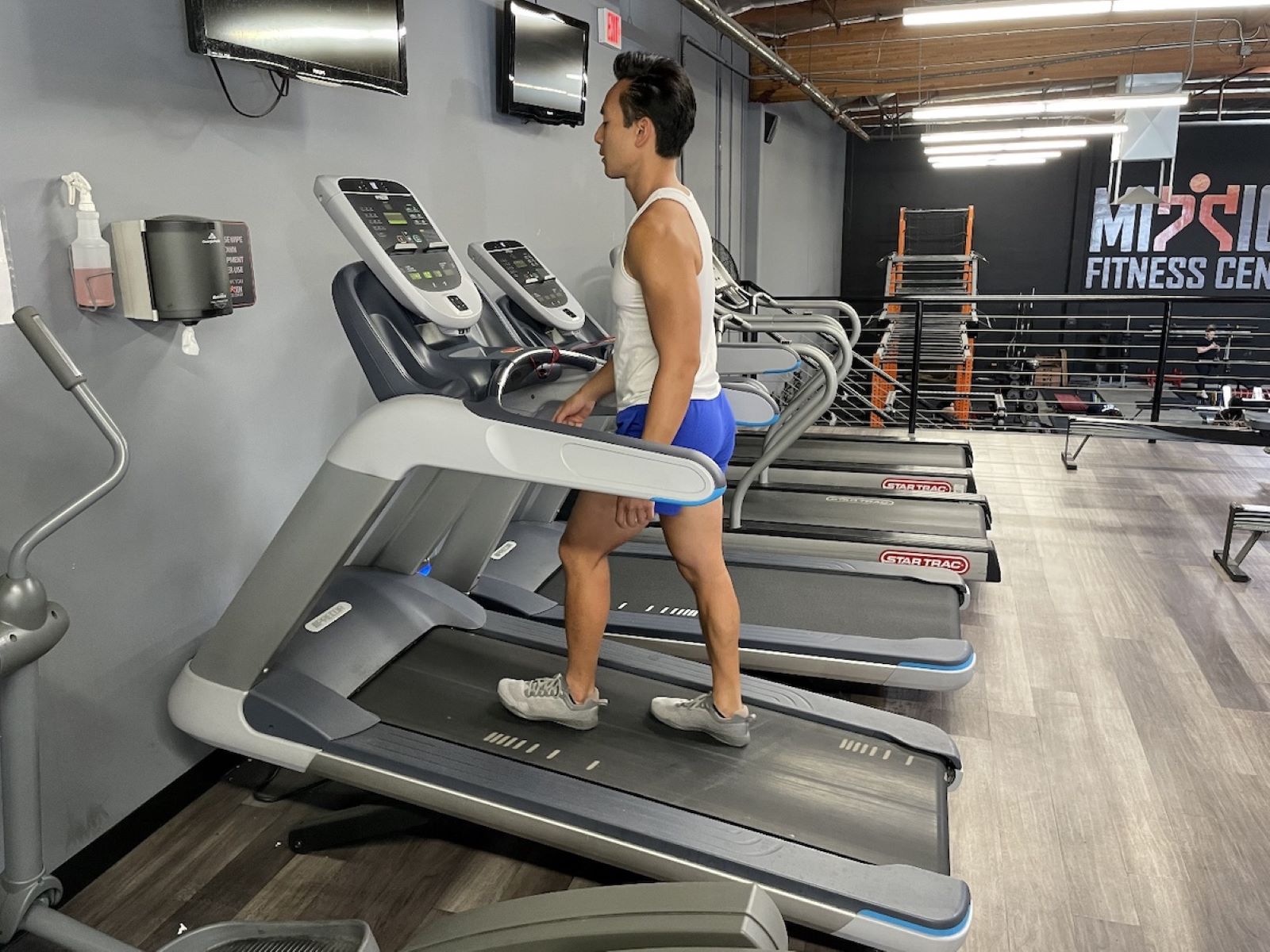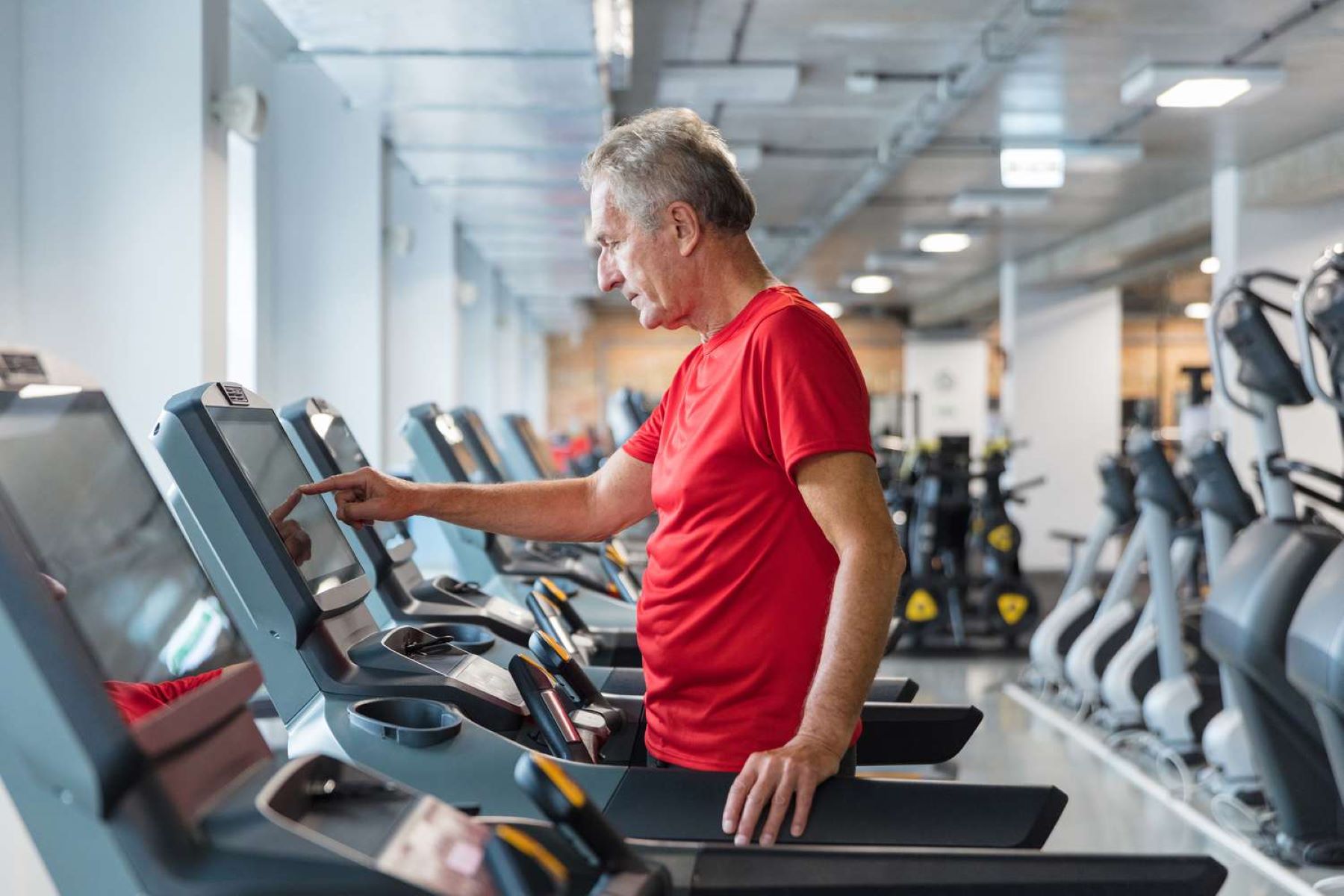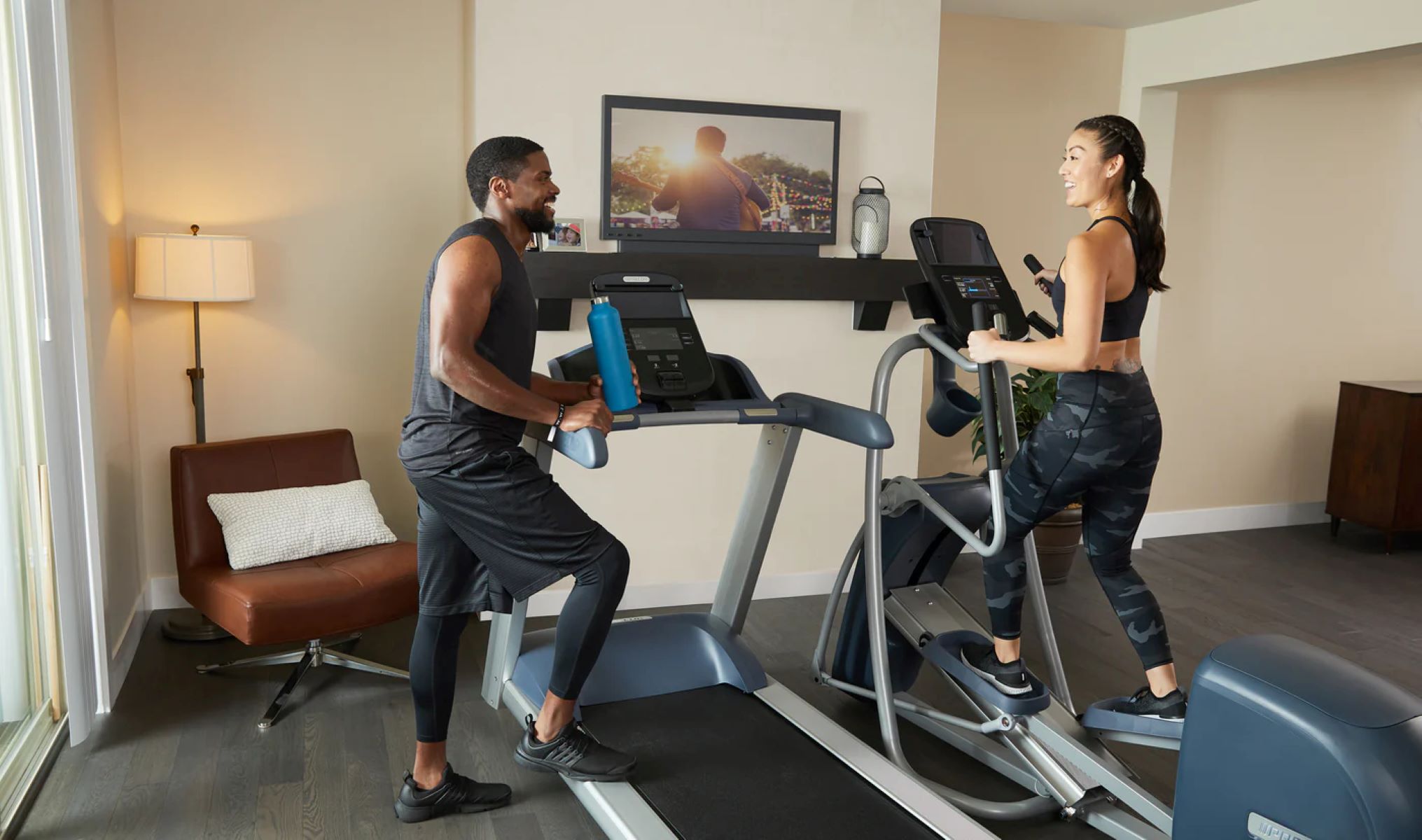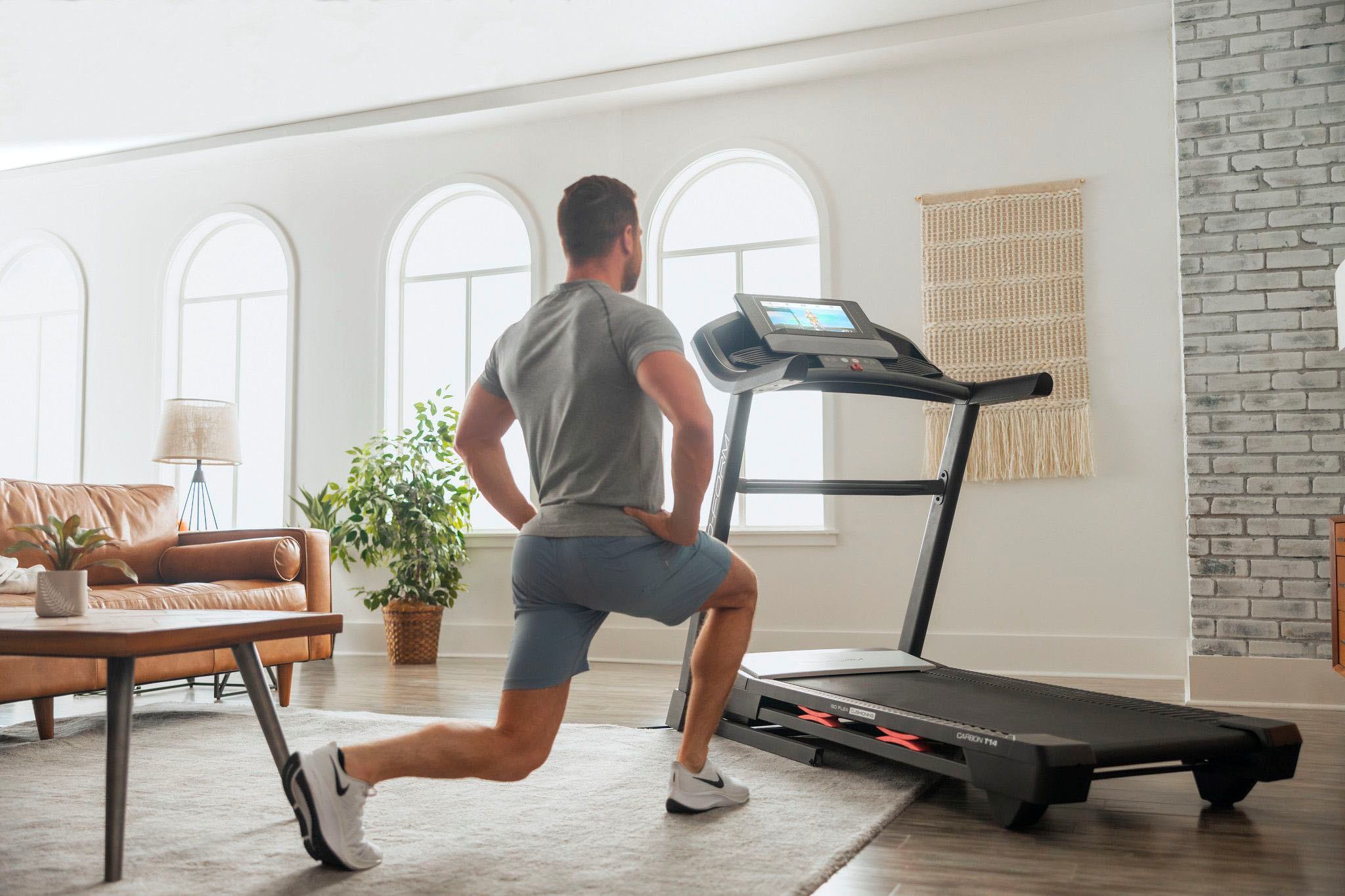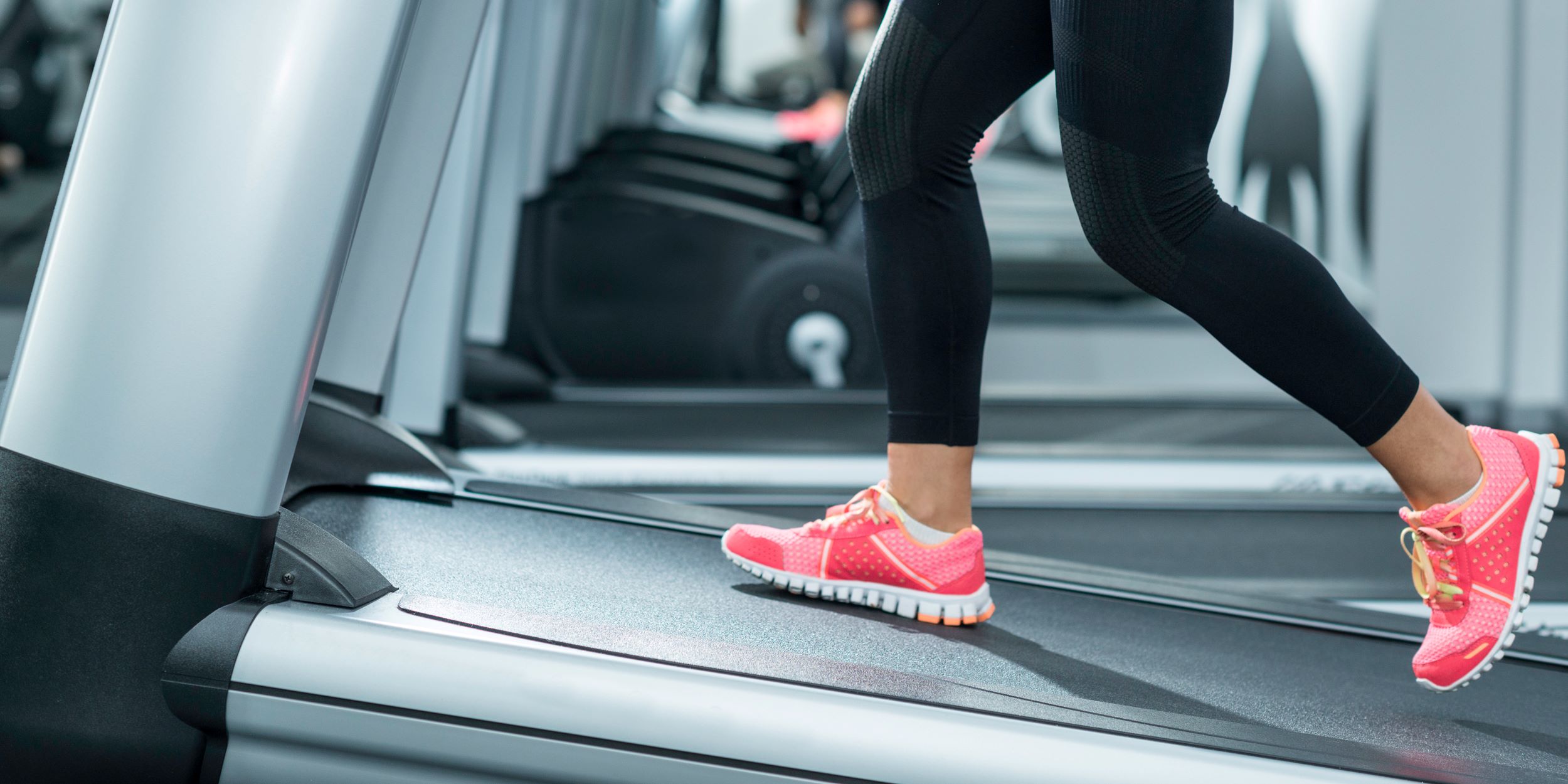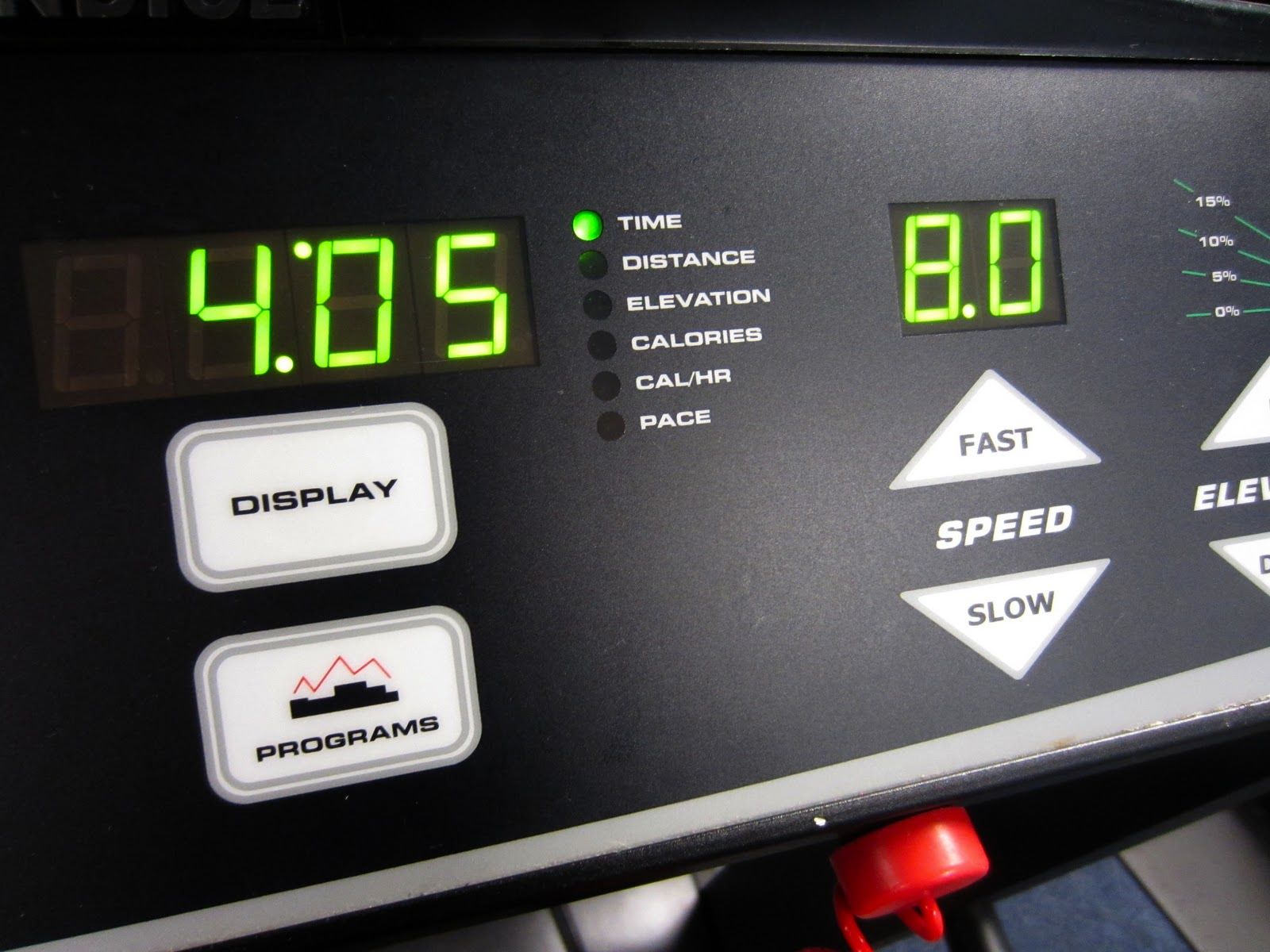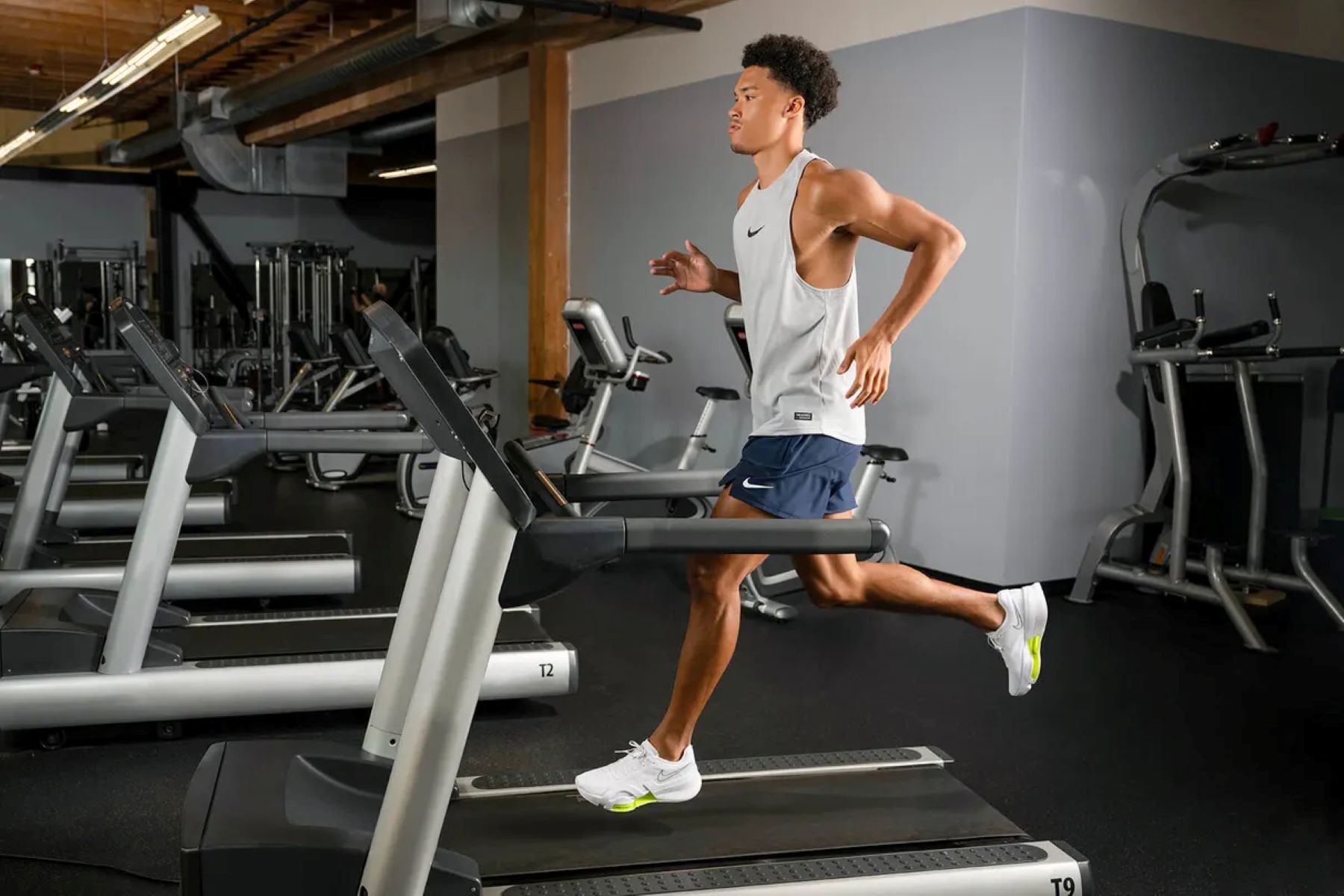

Featured
What Muscles Does The Treadmill Work
Modified: January 2, 2024
Discover the featured muscles worked by the treadmill, and achieve a full-body workout to tone and strengthen your legs, glutes, and core. Boost your fitness routine with this versatile exercise machine!
Introduction
When it comes to getting fit and staying healthy, exercise is essential. And one popular exercise machine that many people turn to is the treadmill. The treadmill offers a convenient way to walk, jog, or run indoors, regardless of weather conditions. But have you ever wondered what muscles the treadmill actually works?
In this article, we will explore the various muscles that are targeted and strengthened when using a treadmill. Whether you’re a beginner or a seasoned fitness enthusiast, understanding the specific muscle groups involved can help you make the most out of your treadmill workouts.
Treadmill exercise provides numerous benefits for both your cardiovascular health and overall fitness. Regular treadmill workouts can improve your endurance, strengthen your muscles, burn calories, and even boost your mood. However, it’s important to note that the muscles worked on a treadmill may vary depending on the workout intensity and incline settings.
So, let’s dive into the world of treadmill exercise and discover the muscles that are engaged during your fitness journey.
Benefits of Treadmill Exercise
Treadmill exercise offers a wide range of benefits for individuals of all fitness levels. Whether you’re a beginner looking to improve your cardiovascular health or an experienced athlete aiming to enhance your performance, here are some key advantages of incorporating treadmill workouts into your fitness routine:
- Cardiovascular Health: Treadmill exercise provides an effective cardiovascular workout, helping to strengthen your heart and improve circulation. Regular workouts on the treadmill can reduce the risk of heart diseases and lower blood pressure.
- Weight Management: Treadmill workouts are an excellent way to burn calories and manage your weight. Depending on the intensity and duration of your workout, running or walking on a treadmill can help you shed those extra pounds and maintain a healthy body weight.
- Improved Endurance: Using a treadmill regularly can enhance your stamina and endurance levels. Gradually increasing the intensity and duration of your workouts can help you build up your aerobic capacity, allowing you to engage in longer and more challenging physical activities.
- Joint Health: Running or walking on a treadmill provides a cushioned surface that reduces the impact on your joints compared to outdoor surfaces like concrete or asphalt. This makes it a safer option for individuals with joint issues or those recovering from injuries.
- Convenience and Accessibility: One of the greatest advantages of using a treadmill is the convenience it offers. With a treadmill at home or in the gym, you have the flexibility to exercise whenever you want, regardless of the weather conditions. This accessibility ensures that you can maintain your fitness routine consistently.
- Mood Enhancement: Treadmill exercise has been shown to release endorphins, commonly known as “feel-good” hormones. These hormones can promote a positive mood, reduce stress levels, and improve overall mental well-being.
By incorporating treadmill exercise into your fitness routine, you can reap these benefits and enjoy a healthier and more active lifestyle. It’s important to start at a comfortable level and gradually increase the intensity and duration of your workouts to avoid overexertion and prevent injury.
Muscles Targeted When Using Treadmill
Using a treadmill can engage a variety of muscle groups throughout your body. Whether you’re walking, jogging, or running on the treadmill, here are the main muscles that are targeted during your workout:
- Quadriceps: The quadriceps, located in the front of your thighs, are heavily engaged when you push off with your legs while running or walking on a treadmill. The repetitive contraction and extension of these muscles help build strength and endurance.
- Hamstrings: The muscles at the back of your thighs, known as the hamstrings, work as a stabilizer during treadmill exercises. They contract eccentrically to control the forward motion of your leg and help in decelerating your foot after each stride.
- Glutes: Your gluteal muscles, which consist of the gluteus maximus, gluteus medius, and gluteus minimus, play a significant role in treadmill workouts. They help maintain proper posture, stabilize the hips, and provide power for running or walking.
- Calf Muscles: The calf muscles, including the gastrocnemius and soleus, are actively engaged during treadmill exercise. They contract as you push off the balls of your feet, propelling you forward with each stride.
- Core Muscles: While it may not seem obvious, treadmill exercise also works your core muscles, including your abdominals and obliques. These muscles stabilize your torso and help maintain proper posture throughout your workout.
- Upper Body Muscles: Although the focus of treadmill exercise is primarily on the lower body, your upper body also plays a role in maintaining balance and stability. Your arms, shoulders, and back muscles are engaged as you swing your arms back and forth while walking or running.
It’s important to note that the specific muscles targeted may vary based on the intensity and incline of your treadmill workout. Higher inclines will engage your leg muscles more intensely, while incorporating intervals and hill sprints can further challenge your muscles and increase your overall fitness level.
By incorporating treadmill workouts into your fitness routine, you can target and strengthen these major muscle groups, leading to improved overall strength, endurance, and stability. Remember to maintain proper form and gradually increase the intensity of your workouts to prevent muscle imbalances and reduce the risk of injury.
Quadriceps
When using a treadmill, one of the main muscle groups that is targeted is the quadriceps. The quadriceps, also known as the quads, are a group of muscles located in the front of your thighs. They consist of four individual muscles: rectus femoris, vastus lateralis, vastus medialis, and vastus intermedius.
The quadriceps play a significant role in treadmill exercise as they are responsible for extending your knee and straightening your leg. As you push off with your legs while running or walking on the treadmill, the quadriceps contract to propel your body forward. This repetitive contraction and extension of the quadriceps help build strength and endurance in these muscles.
Engaging your quadriceps during treadmill workouts can have several benefits. Firstly, it helps to improve the overall power and efficiency of your leg movements. Strong quadriceps allow you to generate more force with each stride, enabling you to run or walk at a faster pace.
Secondly, strengthening your quadriceps can enhance your knee stability and reduce the risk of knee injuries. The quadriceps work in conjunction with other muscles and connective tissues around the knee joint to provide support and stability. By improving the strength and endurance of your quadriceps, you can help maintain proper alignment of the knee joint and prevent excessive stress on the surrounding structures.
Additionally, developing strong quadriceps can contribute to better overall balance and stability. The quadriceps play a crucial role in maintaining upright posture and controlling movements while walking or running. By strengthening these muscles, you can improve your overall body control and reduce the risk of falls or imbalances.
To target and engage your quadriceps on the treadmill, focus on increasing your incline or speed. Walking or running on an incline requires greater effort from your quadriceps, as they work harder to overcome the resistance. Incorporating intervals or hill sprints into your treadmill workouts can also specifically target the quadriceps and further challenge these muscles.
Incorporating exercises that directly target the quadriceps, such as lunges or squats, into your overall strength training routine can also complement your treadmill workouts. These exercises can enhance quadriceps strength and balance out the workload between your quad muscles.
Remember to listen to your body and gradually increase the intensity of your treadmill workouts. It’s important to maintain proper form and avoid overexertion to prevent muscle strains or imbalances. By including quadriceps-focused exercises on the treadmill, you can maximize the benefits of your workouts and develop stronger, more powerful legs.
Hamstrings
When using a treadmill, another important muscle group that is targeted is the hamstrings. The hamstrings are a group of muscles located at the back of your thighs, and they consist of three main muscles: the biceps femoris, semitendinosus, and semimembranosus.
The hamstrings play a crucial role in treadmill exercise as they act as both stabilizers and decelerators. When you walk or run on a treadmill, the hamstrings contract eccentrically to control the forward motion of your leg and help decelerate your foot after each stride. This eccentric contraction helps to protect your knees and maintain stabilization during the movement.
Strengthening the hamstrings through treadmill exercise has several benefits. Firstly, strong hamstrings can improve your overall lower body strength and power. These muscles work with your quadriceps to provide a balanced and efficient leg movement pattern, allowing you to generate more force with each stride.
Secondly, developing strong hamstrings can help prevent injuries, particularly in the knees and hips. The hamstrings play a crucial role in stabilizing the knee joint and supporting the surrounding structures. By strengthening these muscles, you can reduce the risk of strains, tears, or other knee-related injuries.
Additionally, strong hamstrings contribute to better overall posture and body mechanics. These muscles work in conjunction with the glutes and lower back to maintain proper alignment of the pelvis and spine. By strengthening your hamstrings, you can enhance the stability and function of your entire lower body.
To effectively target and engage the hamstrings on the treadmill, you can focus on intermittently increasing the incline or speed of your workout. Running or walking on an incline places greater demand on your hamstrings, as they work harder to control the movement and stabilize your legs.
It’s also important to strengthen the hamstrings through additional exercises outside of treadmill workouts. Incorporate exercises such as hamstring curls, deadlifts, or Romanian deadlifts into your strength training routine. These exercises specifically target the hamstrings and promote muscle strength and balance.
Remember to listen to your body and gradually increase the intensity and duration of your treadmill exercises. Proper form and technique are important to prevent strains or imbalances. By focusing on strengthening your hamstrings alongside other major muscle groups, you can optimize your treadmill workouts and achieve a well-rounded lower body fitness.
Glutes
When using a treadmill, one of the major muscle groups that is targeted is the glutes. The glutes, or gluteal muscles, are a group of three muscles: the gluteus maximus, gluteus medius, and gluteus minimus. They are located in your buttocks and play a crucial role in stabilizing and powering your hip and leg movements.
The glutes are heavily engaged when you walk, jog, or run on a treadmill. They help maintain proper posture, stabilize the hips, and provide power for your movements. As you push off with each stride, the glutes contract to propel your body forward.
Engaging and strengthening your glutes during treadmill exercise has numerous benefits. Firstly, strong glutes contribute to a more functional and powerful lower body. These muscles are responsible for hip extension, which is essential for activities like walking, running, and climbing stairs. Strengthening your glutes can improve your overall lower body strength and enhance your performance in various physical activities.
Secondly, developing strong glutes can help improve your overall posture and spinal alignment. The glutes work in conjunction with the core muscles to maintain stability and prevent excessive stress on the lower back. By strengthening your glutes, you can achieve better balance and reduce the risk of lower back pain or injury.
Additionally, strong glutes can help prevent knee and hip injuries. As major stabilizers of the hips, the glutes support and protect the joints during movement. Strengthening these muscles can provide better joint stability, reducing the risk of strains, sprains, or other injuries.
To effectively target and engage your glutes on the treadmill, focus on incorporating exercises that emphasize hip extension. Increase the incline on the treadmill to activate the glutes more intensely. You can also incorporate glute-specific exercises such as lunges, squats, or glute bridges into your overall workout routine.
Remember to warm up properly before your treadmill workout and maintain good form throughout your exercises. Pay attention to engaging your glutes and avoid relying solely on your lower back or quadriceps for powering your movements. By actively engaging and strengthening your glutes, you can enhance your lower body strength, stability, and overall physical performance.
Calf Muscles
When using a treadmill, one of the primary muscle groups that is targeted is the calf muscles. The calf muscles, composed of two main muscles called the gastrocnemius and soleus, are located on the back of your lower legs and play a crucial role in walking, running, and jumping movements.
During treadmill exercise, the calf muscles are actively engaged as you push off with the balls of your feet to move forward. This action of “toe-off” involves the contraction of the calf muscles, specifically the gastrocnemius and soleus, to generate the force needed for propulsion.
Targeting and strengthening your calf muscles through treadmill workouts has numerous benefits. Firstly, strong calf muscles help improve your overall lower body strength and power. These muscles are responsible for ankle plantar flexion, which is crucial for activities like walking, running, and jumping. Strengthening your calf muscles can enhance your ability to generate force and improve your performance in various physical activities.
Secondly, well-developed calf muscles contribute to better balance and stability. They play a vital role in helping maintain proper posture and stabilizing the lower leg during movement. Strong calf muscles provide stability and control, reducing the risk of ankle sprains or other injuries.
Additionally, developing strong calf muscles can help prevent conditions like Achilles tendinitis or calf strains. By strengthening these muscles, you can improve their endurance and resilience, reducing the risk of overuse injuries commonly associated with the calf area.
To effectively target and engage your calf muscles on the treadmill, focus on incorporating exercises that emphasize ankle plantar flexion. You can increase the incline on the treadmill or raise your heels slightly when walking or running to place more emphasis on the calves.
In addition to treadmill exercises, you can also include calf-specific exercises in your overall strength training routine. Calf raises, both seated and standing variations, are excellent exercises for targeting and strengthening the calf muscles. These exercises involve raising your body using just the strength of your calf muscles.
Remember to stretch your calf muscles before and after your treadmill workouts to maintain flexibility and prevent tightness. Proper warm-up and gradual progression of intensity are essential to avoid strains or other injuries. By consistently engaging and strengthening your calf muscles, you can enhance your lower body strength, stability, and overall physical performance.
Core Muscles
While it may not be immediately evident, using a treadmill also engages and works your core muscles. Your core muscles are a group of muscles located in your abdomen, lower back, and pelvic area. These muscles play a fundamental role in maintaining stability, balance, and overall posture.
During treadmill exercise, your core muscles work to stabilize your torso and maintain proper alignment. As you walk, jog, or run on the treadmill, the core muscles engage to support your spine and pelvis, helping you maintain a steady and upright posture.
Engaging and strengthening your core muscles during treadmill workouts offers several benefits. Firstly, a strong core enhances overall stability and balance. These muscles work in synergy with the muscles of your lower body to provide a solid foundation for movement. A stable core can help you maintain proper form and prevent excessive swaying or compensatory movements.
Secondly, a strong core contributes to improved overall functional strength and performance. Whether you’re running a marathon or simply going about your daily activities, a strong core allows for efficient transfer of forces between your upper and lower body. It also supports proper movement patterns, reducing the risk of injuries or strains.
Additionally, developing strong core muscles can help alleviate lower back pain. The core muscles, particularly the muscles in your lower back, provide support to the spine and help maintain its natural alignment during movement. Strengthening these muscles can help reduce strain on your back, promoting a healthy and pain-free exercise experience.
To effectively engage your core muscles during treadmill exercise, focus on maintaining proper posture throughout your workout. Stand tall with your shoulders back and engage your abdominal muscles by gently pulling your belly button towards your spine. Avoid slouching or leaning forward, as this can disengage your core muscles.
Additionally, you can incorporate specific core exercises into your fitness routine. Exercises such as planks, Russian twists, or bicycle crunches target and strengthen the core muscles. These exercises can complement your treadmill workouts and help build a strong and stable core.
Remember to listen to your body and gradually increase the intensity of your workouts. Engaging your core throughout the duration of your treadmill exercise will naturally strengthen these muscles. By incorporating core-specific exercises and maintaining proper form, you can enhance your stability, balance, and overall fitness level.
Upper Body Muscles
While the main focus of treadmill exercise is on the lower body, it is important to recognize that your upper body also plays a role in maintaining balance and stability during your workout. When using a treadmill, various muscles in your upper body are engaged to assist in maintaining proper posture and facilitating arm movements.
Here are some of the upper body muscles that are involved when using a treadmill:
- Arms: Your arm muscles, including your biceps and triceps, are active during treadmill workouts. As you walk or run, your arms move back and forth in sync with your leg movements, helping to maintain balance and stability.
- Shoulders: Your shoulder muscles, particularly the deltoids and rotator cuff muscles, play a role in maintaining shoulder stability and controlling arm movements during treadmill exercise.
- Back Muscles: The muscles in your upper back, including the trapezius and rhomboids, can be engaged when maintaining an upright posture during treadmill workouts.
While the engagement of these upper body muscles may not be as significant as the lower body muscles, incorporating proper arm movements can improve your overall coordination and help you maintain a balanced stride.
When using a treadmill, it is important to let your arms swing naturally and avoid excessive tension or restriction. Allow your arms to move back and forth in a relaxed and coordinated manner, in sync with your foot movements.
While treadmill exercise alone may not be sufficient to fully develop upper body strength and muscle definition, you can incorporate additional exercises into your fitness routine to target the upper body more specifically. Strength training exercises such as bicep curls, shoulder presses, or rows can help strengthen and sculpt your upper body muscles.
Remember to listen to your body and maintain proper form throughout your treadmill workouts. Incorporating upper body exercises and paying attention to your arm movements can help promote better overall posture and coordination during your treadmill exercise sessions.
While the primary focus of treadmill exercise is on the lower body muscles, don’t neglect the importance of engaging and strengthening your upper body for a well-rounded workout.
Conclusion
The treadmill is a versatile and effective exercise machine that targets a variety of muscles throughout your body. By understanding the specific muscle groups that are engaged during treadmill exercise, you can optimize your workouts and achieve better overall fitness results.
From the quadriceps and hamstrings to the glutes, calf muscles, core muscles, and upper body muscles, each muscle group plays a vital role in maintaining proper form, stability, and power while using the treadmill.
By incorporating treadmill exercise into your fitness routine, you can experience a wide range of benefits, including improved cardiovascular health, weight management, increased endurance, joint health, convenience, and mood enhancement.
Remember to gradually increase the intensity and duration of your treadmill workouts to avoid overexertion and prevent injury. It is also beneficial to include specific exercises outside of the treadmill to complement the muscle groups targeted during treadmill exercise.
Whether you’re a beginner or an experienced fitness enthusiast, understanding the muscles worked on a treadmill can help you make the most out of your workouts, strengthen your body, and achieve your fitness goals.
So, lace up your shoes, hop on the treadmill, and feel the burn as you engage multiple muscle groups and take your fitness journey to new heights!
